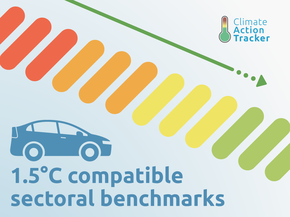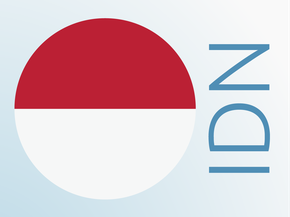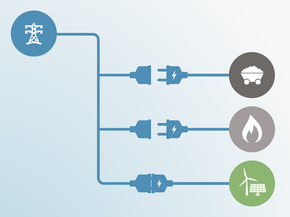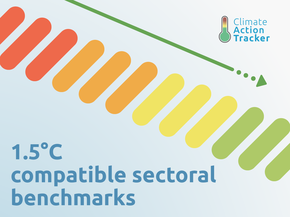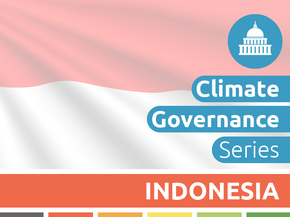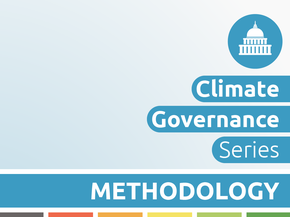Critically Insufficient4°C+
World
NDCs with this rating fall well outside of a country’s “fair share” range and are not at all consistent with holding warming to below 2°C let alone with the Paris Agreement’s stronger 1.5°C limit. If all government NDCs were in this range, warming would exceed 4°C.
Highly insufficient< 4°C
World
NDCs with this rating fall outside of a country’s “fair share” range and are not at all consistent with holding warming to below 2°C let alone with the Paris Agreement’s stronger 1.5°C limit. If all government NDCs were in this range, warming would reach between 3°C and 4°C.
Insufficient< 3°C
World
NDCs with this rating are in the least stringent part of a country’s “fair share” range and not consistent with holding warming below 2°C let alone with the Paris Agreement’s stronger 1.5°C limit. If all government NDCs were in this range, warming would reach over 2°C and up to 3°C.
2°C Compatible< 2°C
World
NDCs with this rating are consistent with the 2009 Copenhagen 2°C goal and therefore fall within a country’s “fair share” range, but are not fully consistent with the Paris Agreement long term temperature goal. If all government NDCs were in this range, warming could be held below, but not well below, 2°C and still be too high to be consistent with the Paris Agreement 1.5°C limit.
1.5°C Paris Agreement Compatible< 1.5°C
World
This rating indicates that a government’s NDCs in the most stringent part of its “fair share” range: it is consistent with the Paris Agreement’s 1.5°C limit.
Role model<< 1.5°C
World
This rating indicates that a government’s NDC is more ambitious than what is considered a “fair” contribution: it is more than consistent with the Paris Agreement’s 1.5°C limit.
Sources
List of references
- Alisjahbana, A. S., & Busch, J. M. (2017). Forestry, Forest Fires, and Climate Change in Indonesia. Bulletin of Indonesian Economic Studies, 53(2), 111–136. https://doi.org/10.1080/00074918.2017.1365404
- ASEAN Centre for Energy, & GIZ. (2018). Mapping of green building codes and building energy efficiency in ASEAN: Towards guidelines on ASEAN green building codes. Jakarta, Indonesia.
- Asia Pacific Energy Research Centre. (2016). APEC Energy Demand and Supply Outlook 6th Edition. Volume II: Economic Reviews. Retrieved from APEC website: http://aperc.ieej.or.jp/file/2016/5/10/APEC_Outlook6th_VolumeII_EconomyReviews.pdf
- Bridle, R., Gass, P., Halimajaya, A., Lontoh, L., McCulloch, N., Petrofsky, E., & Sanchez, L. (2018). Missing the 23 Per Cent Target: Roadblocks to the Development of Renewable Energy in Indonesia.
- CLASP. (2018). CLASP energy efficiency in appliances policy database.
- Climate Policy Database. (2013). Transport Ministerial Regulation No. 201/2013. Cologne and Berlin, Germany: NewClimate Institute.
- DeCicco, J. M., Liu, D. Y., Heo, J., Krishnan, R., Kurthen, A., & Wang, L. (2016). Carbon balance effects of U.S. biofuel production and use. Climatic Change, 138(3–4), 667–680. https://doi.org/10.1007/s10584-016-1764-4
- ESDM. (2015). Ministerial Regulation No. 12/2015. Jakarta, Indonesia: Ministry of Energy and Mineral Resources.
- GBPN. (2013). Indonesia | Global Buildings Performance Network.
- Global Forest Watch. (2018). Indonesia Tree Cover Loss.
- Hajramurni, A. (2018). Jokowi inaugurates first Indonesian wind farm in Sulawesi. The Jakarta Post. Retrieved from https://www.thejakartapost.com/news/2018/07/02/jokowi-inaugurates-first-indonesian-wind-farm-in-sulawesi.html
- ICCT. (2016). Biofuels Policy in Indonesia: Overview and Status Report. Retrieved from http://www.theicct.org/sites/default/files/publications/Indonesia Biofuels Policy_ICCT_08082016.pdf
- IEA. (2016). Energy Efficiency Policies and Measures Database.
- IEA. (2017). Southeast Asia Energy Outlook 2017. https://doi.org/10.1787/weo-2013-en
- IEEFA. (2017). Overpaid and Underutilized: How capacity payments to coal-fired power plants could lock Indonesia into a high-cost electricity future.
- Indonesia Investments. (2018). Indonesian Government Preparing Roadmap for Electric Car Industry.
- Institute for Essential Services Reform. (2018). Indonesia Clean Energy Outlook. Jakarta, Indonesia.
- Kuramochi, T., Höhne, N., Gonzales-Zuñiga, S., Hans, F., Sterl, S., Hagemann, M., … Turkovska, O. (2017). Greenhouse gas mitigation scenarios for major emitting countries. Analysis of current climate policies and mitigation commitments: 2017 update. NewClimate Institute, PBL Netherlands Environmental Assessment Agency and International Institute for Applied Systems Analysis (IIASA).
- MEMR Indonesia. (2017). Handbook of Energy and Economic Statistics of Indonesia 2017. Jakarta.
- Mersmann, F., Wehnert, T., Andreeva, T., Fekete, H., Luna, L., & Streitferdt, V. (2017). Implementation of Nationally Determined Contributions - Indonesia country report. Retrieved from https://www.umweltbundesamt.de/sites/default/files/medien/1410/publikationen/2017-10-26_climate-change_24-2017_country-report-indonesia.pdf
- Ministry of Energy and Mining Resources. (2019). Energy Booklet, 2018.
- Ministry of National Development Planning (Bappenas). (2019). Low Carbon Development : A Paradigm Shift Towards a Green Economy in Indonesia.
- Ministry of Transportation. (2014). Sustainable Urban Transport Programme Indonesia (NAMA SUTRI).
- Mongabay. (2018). Indonesian president signs 3-year freeze on new oil palm licenses.
- Mosnier, A., Boere, E., Reumann, A., Yowargana, P., Pirker, J., Havlik, P., & Pacheco, P. (2017). Palm oil and likely futures: Assessing the potential impacts of zero deforestation commitments and a moratorium on large-scale oil palm plantations in Indonesia. https://doi.org/10.17528/cifor/006468
- Mulyani, M., & Jepson, P. (2016). Does the ‘One Map Initiative’ Represent a New Path for Forest Mapping in Indonesia? Assessing the Contribution of the REDD+ Initiative in Effecting Forest Governance Reform. Forests, 8(1), 14. https://doi.org/10.3390/f8010014
- OECD/IEA, & IEA. (2016). World Energy Outlook 2016. Paris, France: International Energy Agency.
- Republic of Indonesia. (2011). Peraturan Presiden (Presidential Regulation) No 61/2011: Rencana aksi nasional penurunan emisi gas rumah kaca. Retrieved from http://ditjenpp.kemenkumham.go.id/arsip/ln/2011/ps61-2011.pdf
- Republic of Indonesia. (2016). First Nationally Determined Contribution. Retrieved from http://www4.unfccc.int/ndcregistry/PublishedDocuments/Indonesia First/First NDC Indonesia_submitted to UNFCCC Set_November 2016.pdf
- Republic of Indonesia. (2018a). Indonesia Second Biennial Update Report. Jakarta, Indonesia.
- Republic of Indonesia. (2018b). Indonesia Third National Communication under the United Nations Framework Convention on Climate Change. Jakarta, Indonesia.
- Republic of Indonesia. (2018c). Rencana Usaha Penyediaan Tenaga Listrik (RUPTL).
- Republic of Indonesia. (2019). Rencana Usaha Penyediaan Tenaga Listrik (RUPTL) 2019-2028.
- Tacconi, L. (2018). Indonesia’s NDC bodes ill for the Paris Agreement. Nature Climate Change, 8(July), 2100. https://doi.org/10.1038/s41558-018-0277-8
- The Jakata Post. (2018, March). PLN puts 22,000 MW power plant projects on hold.
- UNFCCC. (2015). Greenhouse Gas Inventory Data. In Greenhouse Gas Inventory Data. Retrieved from http://unfccc.int/di/FlexibleQueries/Event.do?event=go
- UNFCCC. (2018). CDM Project Database.
- US Department of Agriculture. (2016). Production, Supply and Distribution. Retrieved December 14, 2016, from http://apps.fas.usda.gov/psdonline/psdQuery.aspx
- Utama, A. (2019). Jakarta launches metro to battle notorious traffic problems. Retrieved from BBC News website: https://www.bbc.com/news/world-asia-47769724
- Wijaya, A., Chrysolite, H., Ge, M., Wibowo, C. K., Pradana, A., Utami, A. F., & Austin, K. (2017). How Can Indonesia Achieve Its Climate Change Mitigation Goal? An Analysis Of Potential Emissions Reductions From Energy And Land-use Policies. World Resources Institute., (September), 36. https://doi.org/10.4155/cmt.13.77
- Wilmar International. (2018). Creating a deforestation-free palm oil supply chain. (December), 1–8.
- World Bank. (2015). Forest area (% of land area). Retrieved September 1, 2015, from http://data.worldbank.org/indicator/AG.LND.FRST.ZS
Further analysis
Country-related publications
Stay informed
Subscribe to our newsletter

